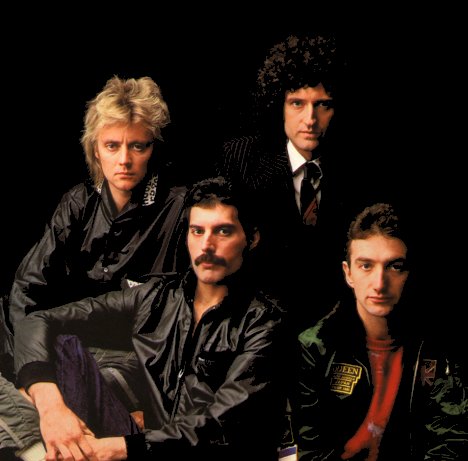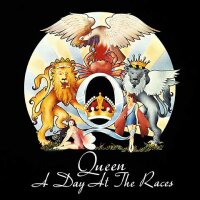06-18-2006 – Sunday Times – Dance: Deux the fandango
Queen’s lush music is the unlikely inspiration for a new show, writes Christie Taylor
Anyone who can remember the autumn of 1975 will have an inkling of what eternity must feel like. Queen, then a middle-league pomp rock outfit, released a six-minute rock opera, Bohemian Rhapsody, that vaulted to the top of the charts and stayed there for nine weeks. It was the beginning of what became a legend, one that survived the death in 1991 of the band’s flamboyant singer, Freddie Mercury, at the age of 45. The Queen legend, unlike many others in the rock firmament, was at least based on good songs — few may remember where they were when Mercury died, but few will forget Queen’s killer performance at Live Aid in 1985. Now, the band’s musical legacy has been celebrated in Queen at the Ballet, a dance performance portraying Mercury’s music and life, or at least the upbeat parts thereof.
When Queen at the Ballet opens at the Point Theatre, Irish audiences will be the first outside of South Africa to see the show. It premiered to sold-out houses in Cape Town, and comes to Ireland courtesy of Irish businessman Chris Dooley, who saw a performance in Stellenbosch and immediately arranged to bring the show to Dublin.
Dooley found a fellow Queen fan in choreographer Sean Bovim, who, like many others, became infatuated with Queen in his teenage years. Bovim remained a fan throughout his career as a soloist with South Africa’s best ballet companies and, despite dancing mostly to Mozart, Tchaikovsky and other classical composers, he immediately chose Queen when he began choreographing. The group’s symphonic sound and Mercury’s vocal range provided a rich palette for creating a ballet, which Bovim mulled over for a year before teaching it to the dancers.
“With Queen’s music there is such a huge scope to work with in carving out a ballet,” says Bovim. “When you listen there are so many ebbs and flows. That’s been the most exciting thing — the way the music has taken on a whole new interpretation as it was choreographed.”
A cast of 30 dancers from Cape Town City Ballet will perform the two-act show in Dublin, accompanied by a 45-piece orchestra of Irish musicians. Two South African singers will cover Mercury’s incredible four-octave vocal range, joined by an Irish soprano to perform Barcelona, Mercury’s collaboration with Spanish diva Montserrat Caballé and the closing number in the show.
Bovim isn’t the first choreographer to bring rock music to the opera house. Mercury himself appeared with the Royal Ballet in 1979 when he not only sang Crazy Little Thing Called Love, but joined in the dancing on stage for Bohemian Rhapsody. In 1993 Chicago’s Joffrey Ballet presented Billboards, set to Prince’s music, to critical and commercial success. Gerald Arpino masterminded that production, which involved several different choreographers picking a Prince song, but the result still emphasised the dancing over the songs, as well as the difference in choreographic styles. Bovim is not only choreographing the entire ballet himself, but he also makes the music the subject matter.
French choreographer Maurice Béjart made a dance to Queen’s music in 1997, but Bejart’s version mixed in Mozart’s music in a tribute to Mercury and his death from Aids-related complications.
Bovim was aware of those dances, he explains, but chose to create something more celebratory. Although Mercury is the centrepiece, there are no episodes from his life or homages to him as an Aids victim. Queen at the Ballet is a non-narrative dance, although movements reflect the energy of the songs — from slow ballads to high-energy anthems.
Bovim did honour Mercury by collaborating with four of South Africa’s fashion designers to create the costumes, hearkening back to Mercury’s interest in art and graphic design, not to mention his outrageous stage clothes. Before launching his career as a musician, Mercury graduated from Ealing College of Art in England and created the band’s logo using imagery from their star signs.
“I think Freddie is smiling because I touched on his love of design and fashion,” Bovim says. “Although I’m telling the story in an abstract way, I’ve touched on his outrageousness and his parties and good times. I’ve also got more intimate at some of the relationships he had. He was quite ahead of his time.”
In some ways Bovim is plotting uncharted territory by creating an entire ballet that suggests a rock concert more than a staid performance with ballerinas in tutus. At first glance the dancers could be back-up singers the way they slide across the stage, strut and step into the strobe lights. But when they kick their legs as high as their ears and execute multiple pirouettes, it becomes clear they are ballerinas. By placing them centre stage, Bovim mixes ballet with popular culture, a quandary facing most ballet choreographers today.
Bovim met particular challenges creating this ballet in South Africa, where frequent changes in government parties affect whether the arts go in or out of favour. Faced with these uncertainties, Cape Town City Ballet turned its attention to attracting younger audiences to what is often perceived as an old- fashioned art form.
South African choreographers must appeal to a diverse demographic: of the country’s 45m people, 13% descend from a European background and more than 11 languages are spoken — from English to Afrikaans to Xhosa.
Bovim chose music and dance that would transcend South Africa’s many cultures and languages, and ballet audiences have swollen to unprecedented numbers. Queen at the Ballet’s last run sold out a week in advance of its two-week stint at Cape Town’s Artscape Opera House(cor) and, like any successful rock band, the show now has its groupies. “This ballet has brought in a different audience,” Bovim says. “The ballet audiences in South Africa have grown, and I’m not going to say I’m responsible for all of it, but really we’ve moved on to a different generation where we are still using the classics but bending the rules to make it more edgy.”



